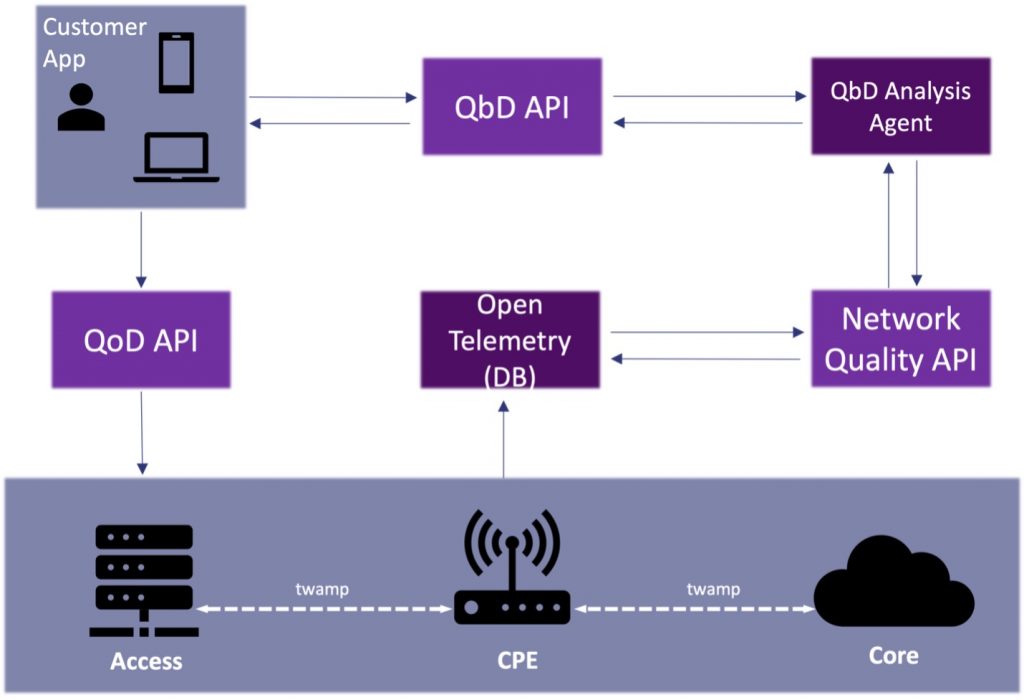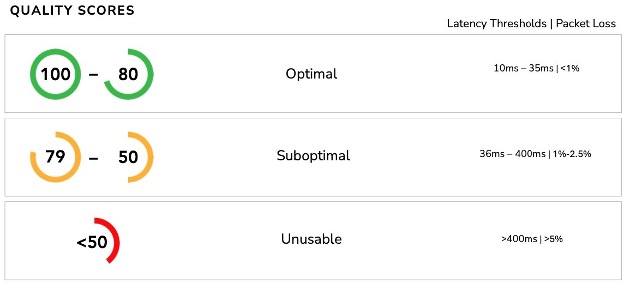Network as a Service
Quality by Design Streamlines Network Management for Improved User Experience

Key Points
- Quality by Design, a part of CableLabs’ Network as a Service framework, leverages standardized APIs to facilitate communication between applications and the network.
- The specification provides real-time visibility into customer service issues and enables quick resolution.
Service providers and application developers are always striving to deliver the best possible experience for their end users. Optimizing network performance is critical. But in an era of isolated architectures — DOCSIS®️, optical and mobile — traditional network management can be challenging.
In addition, a lack of visibility between applications and the underlying network can make troubleshooting potential network impairments incredibly difficult at an individual user level. The situation is further complicated for application developers, who must navigate varying network conditions and limitations, potentially causing issues that may originate from within the applications themselves.
Recognizing these challenges, CableLabs has introduced Quality by Design (QbD) within the Network as a Service (NaaS) framework. Our goal is to unify and streamline network management.
What is Quality by Design?
The QbD specification is designed to enhance network performance and user experience through real-time monitoring and automated issue resolution. By leveraging a set of standardized APIs, QbD facilitates two-way communication between applications and the network. Applications can therefore act as network monitoring tools, sharing real-time key performance indicators (KPIs) with the network. Figure 1 shows the QbD design.
Figure 1: QbD Overview
This approach not only provides visibility into user experiences but also enables quick identification and resolution of network issues by correlating application KPIs with network performance data. In this way, QbD swiftly addresses any problems, whether rooted in the network or the application. Customer events are triggered based on a quality score, as Figure 2 shows.
Figure 2: Sample Thresholds for Video Conferencing Applications
QbD enables the swift diagnosis and resolution of network impairments. Automated solutions can then be deployed to address these issues promptly, minimizing disruptions and maintaining high service quality. The inclusion of automated solutions reduces the incidence of excessive network alarms and ensures rapid response to suboptimal application performance.
Impact on End Users
Many factors can lead to end users experiencing degraded quality and suboptimal application performance. QbD helps to address these potential situations by correlating application events with potential underlying network events to determine where the root cause of the problem is occurring through the exchange of KPIs between the application and the network.
This approach allows both applications and networks to dynamically respond to changing conditions, enhancing the customer experience. By turning applications into network quality monitoring agents that actively participate in network management, QbD fosters a more seamless and high-quality user experience.
CableLabs' Role in Quality by Design
CableLabs has been at the forefront of advancing network technologies and standards, and our role in the development and implementation of QbD is a testament to our commitment to innovation. We recognized the limitations of traditional network management, where disparate DOCSIS, optical and mobile networks were often managed on separate platforms with different operations, leading to difficulties in identifying when an individual customer is not getting the level of service they desire.
The QbD APIs have been contributed back to CAMARA, a Linux Foundation Project aligning these intent-based APIs for the broader telco industry. We hope to have the first version published in the near future. This capability transforms applications into proactive participants in network monitoring and management, providing a more granular and accurate view of network performance.
Furthermore, CableLabs has led the charge in integrating automated response mechanisms within the QbD framework. This automation is crucial for reducing the time and effort required to identify and resolve network issues. By leveraging machine learning algorithms and advanced analytics, QbD can correlate application KPIs with network telemetry data, pinpointing potential problems with high precision.
Another key aspect of CableLabs' role in QbD is fostering a collaborative ecosystem among network operators and application developers. By providing a standardized framework and tools, CableLabs encourages these stakeholders to work together, share insights and develop best practices for network and application performance optimization. This collaboration not only enhances the capabilities of individual entities but also contributes to a more robust and resilient overall network infrastructure.
How to Get Engaged
As the digital landscape continues to evolve, ensuring optimal network performance and seamless user experiences becomes increasingly crucial. We invite network operators, application developers and other stakeholders to explore QbD’s transformative potential. Members can request to join our NaaS working group.
By adopting QbD, you can revolutionize your network management practices, deliver unparalleled user experiences and stay ahead in a competitive market.
Visit CableLabs to learn more about how you can implement QbD within your network infrastructure and join the movement toward a more integrated, efficient and responsive digital future. Let's work together to set new standards in network quality and user satisfaction!



